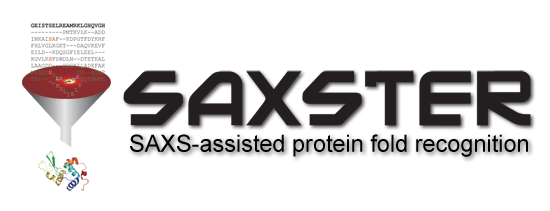


SAXSTER is a new algorithm to combine small-angle x-ray scattering (SAXS) data and threading for high-resolution protein structure determination. Given a query sequence, SAXSTER first generates a list of template alignments using the MUSTER threading program from the PDB library. The SAXS data will then be used to prioritize the best template alignments based on the SAXS profile match, which are finally used for full-length atomic protein structure construction. >> More about the server...
The input to the server includes a query sequence and a set of SAXS raw data. The output includes (An example for SAXSTER output for reciprocal space and for real space):